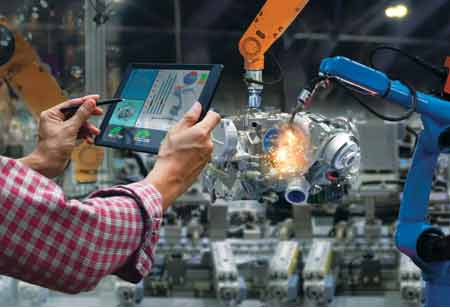

Thank you for Subscribing to Auto Business Outlook Weekly Brief

In the production of premium vehicles, individualisation and quality play a key role. The current BMW 3 Series, for example, is available in more than one billion possible configurations. At the same time, the integration approach of manufacturing vehicles with a wide variety of drive systems – petrol, diesel, plug-in hybrids and battery electric vehicles – on the same assembly line increases the complexity of the production system.
In addition to manual visual checks or conventional, pixel-based computer vision methods, Artificial Intelligence (AI) offers an innovative, high-performance method for quality assurance in production. The technology of Deep Learning, a method of Artificial Intelligence, is particularly suitable in image processing for the tasks of classification, object detection, or semantic segmentation. In the application of AI, a distinction is made between the training phase and the subsequent phase of live operation, the "inference". In the case of image processing, an initial data set of photos is required for training. The pictures must be arranged in such a way that relevant environmental parameters such as positioning, orientation, focusing, illumination, reflections, etc. vary in a targeted manner so that they approximate the scenarios to be expected during the inference. In addition to the photos, so-called labels are required that reflect information about the type and location of relevant objects that is adequate for the task. Photographs including labels are then used to modify the internal weights of a deep neural network in such a way that it matches the labels in the training data as accurately as possible. In order to efficiently achieve a powerful model, the so-called Transfer Learning is applied. In this process, an underlying neural network is modified, but not completelylearned from scratch. Using an existing network architecture with given weights, the modification is carried out with the help of a framework and a new training data set. Typically, this procedure requires a training data set of a few hundred photos. The support of the employees is fundamental to all innovations in the BMW Production System. This applies equally to AI systems. Compared to an inspection of certain quality features by employees or so-called camera portals, which are based on conventional methods such as pixel-based grey scale comparison, AI offers significantly better performance on the one hand, i.e. fewer pseudo errors. On the other hand, AI works robustly under essentially all production conditions. The BMW Group, for example, has implemented the inline detection of model lettering in assembly or the examination of sheet metal parts in real time using AI. To ensure that all production employees experience the benefits that AI can bring to their daily work, these and other successful AI applications were presented in a broad internal communication campaign.To ensure that all production employees experience the benefits that AI can bring to their daily work, AI applications are presented in a broad internal communication campaign
I agree We use cookies on this website to enhance your user experience. By clicking any link on this page you are giving your consent for us to set cookies. More info